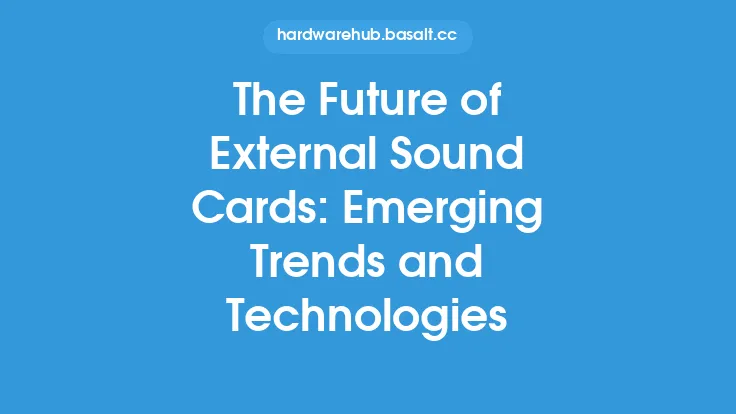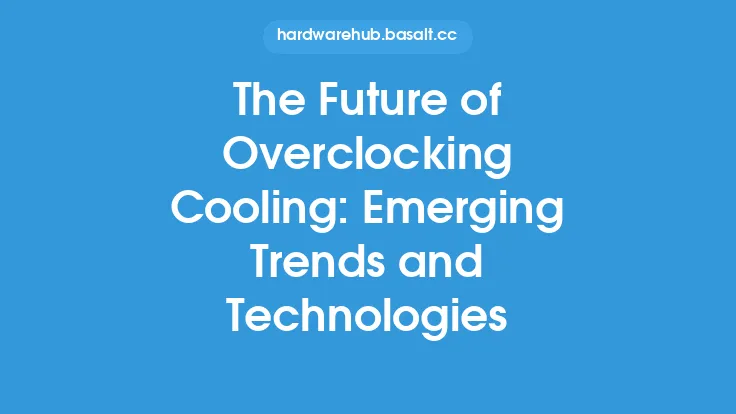The world of printing is undergoing a significant transformation, driven by emerging trends and technologies that are changing the way we print, interact with printed materials, and perceive the printing industry as a whole. From advancements in inkjet and laser printing to the rise of 3D printing and bioprinting, the future of printing is exciting, innovative, and full of possibilities. In this article, we will delve into the latest developments and trends in the printing industry, exploring the technologies, materials, and applications that are shaping the future of printing.
Introduction to Emerging Printing Technologies
Emerging printing technologies are revolutionizing the way we print, enabling faster, more efficient, and more cost-effective production of printed materials. One of the key technologies driving this transformation is nanotechnology, which involves the use of nanoparticles to create high-quality prints with enhanced color, texture, and durability. Another significant development is the use of graphene, a highly conductive and flexible material that is being used to create advanced printing inks and substrates. These technologies are enabling the creation of printed materials with unique properties, such as self-healing, shape-memory, and electroconductivity.
Advances in Inkjet and Laser Printing
Inkjet and laser printing are two of the most widely used printing technologies, and they continue to evolve with advances in ink formulation, printhead design, and paper handling. Inkjet printing, in particular, has seen significant improvements in recent years, with the development of high-speed, high-resolution printheads that can produce prints with exceptional color accuracy and detail. Laser printing, on the other hand, has become more efficient and cost-effective, with the introduction of new toner formulations and printing systems that reduce waste and minimize environmental impact. These advances are enabling the production of high-quality prints with faster turnaround times, lower costs, and reduced environmental footprint.
The Rise of 3D Printing and Bioprinting
3D printing and bioprinting are two of the most exciting and rapidly evolving areas of printing technology. 3D printing involves the creation of three-dimensional objects from digital models, using materials such as plastics, metals, and ceramics. Bioprinting, on the other hand, involves the creation of living tissues and organs using biomaterials and living cells. These technologies have the potential to revolutionize industries such as healthcare, aerospace, and consumer products, enabling the creation of customized, functional, and biocompatible products. 3D printing and bioprinting are also enabling the development of new medical treatments, such as tissue engineering and regenerative medicine.
The Impact of Artificial Intelligence and Machine Learning
Artificial intelligence (AI) and machine learning (ML) are having a significant impact on the printing industry, enabling the development of smarter, more efficient, and more automated printing systems. AI and ML algorithms can be used to optimize printing workflows, predict maintenance needs, and detect errors and anomalies in real-time. These technologies can also be used to create personalized printing experiences, such as customized print settings and automated print job routing. Additionally, AI and ML can be used to analyze printing data, providing insights into printing trends, usage patterns, and environmental impact.
The Role of Sustainability and Environmental Responsibility
Sustainability and environmental responsibility are becoming increasingly important in the printing industry, as companies and individuals seek to reduce their environmental footprint and minimize waste. The printing industry is responding to these concerns by developing more sustainable printing technologies, such as energy-efficient printers, biodegradable inks, and recyclable paper products. Additionally, companies are adopting circular economy business models, which involve the design of products and systems that are restorative and regenerative by design. These models aim to reduce waste, promote recycling, and encourage the use of renewable resources.
The Future of Printing: Trends and Predictions
As the printing industry continues to evolve, we can expect to see significant advancements in emerging technologies, such as 3D printing, bioprinting, and nanotechnology. We can also expect to see increased adoption of AI and ML, as well as greater emphasis on sustainability and environmental responsibility. Other trends that are likely to shape the future of printing include the growth of digital printing, the rise of print-on-demand services, and the increasing use of printed electronics and wearable technology. As the printing industry continues to innovate and adapt to changing market demands, we can expect to see new and exciting developments that will transform the way we print, interact with printed materials, and perceive the printing industry as a whole.
Conclusion and Final Thoughts
In conclusion, the future of printing is exciting, innovative, and full of possibilities. Emerging trends and technologies, such as 3D printing, bioprinting, and nanotechnology, are transforming the printing industry, enabling the creation of high-quality prints with unique properties and applications. The adoption of AI and ML is also having a significant impact, enabling the development of smarter, more efficient, and more automated printing systems. As the printing industry continues to evolve, it is likely that we will see significant advancements in sustainability and environmental responsibility, as well as increased adoption of digital printing, print-on-demand services, and printed electronics. Whether you are a printing professional, a business owner, or an individual consumer, it is essential to stay informed about the latest developments and trends in the printing industry, as they are likely to have a significant impact on the way we live, work, and interact with printed materials.





